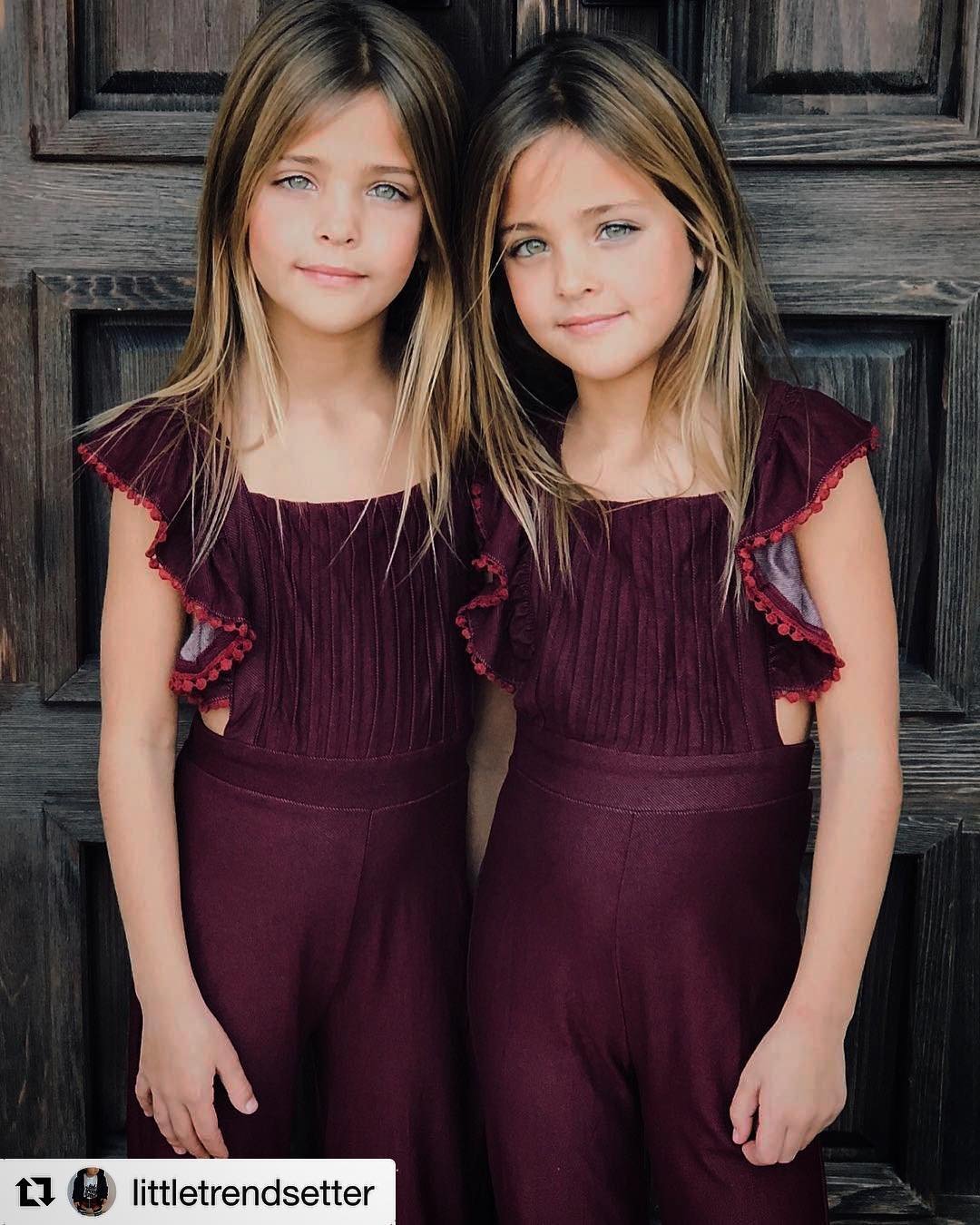There is something truly captivating about twins, wouldn't you say? They represent a very special kind of beginning, a unique shared journey right from the very start. It is, you know, a fascinating aspect of human life, seeing two individuals come into the world at precisely the same moment, sharing so much of their earliest experiences.
These individuals, these twin beings, actually begin their existence from the very same pregnancy. It's a rather extraordinary occurrence, creating a bond that is, in some respects, unlike any other. They are born together, often looking quite similar or, perhaps, having distinct appearances but still holding that deep connection.
We often think about what makes these connections so special, how their lives unfold together, and what makes each pair so distinct. It's a topic that really does spark a lot of curiosity, and we can look at the various forms this shared beginning takes.
Table of Contents
- The Astonishing Start of Twin Life
- Different Kinds of Twin Connections
- Unpacking the Shared Journey
- The Science Behind Shared Lives
- The Rarity of Some Twin Occurrences
- Understanding Twin Health Journeys
- A Look at Twins in the Animal World
- Capturing the Essence of Twin Bonds
The Astonishing Start of Twin Life
When we talk about twins, we are essentially referring to two offspring who are brought forth from the same pregnancy. This means they share a very specific point of origin, a singular period of gestation. It's a pretty remarkable biological event, honestly, that two separate beings can develop side-by-side in this way.
The fundamental meaning of a twin, then, is simply one of two children produced during the same time in the mother's body. They are, you know, linked by this shared beginning, even if their individual paths diverge quite a bit later on. This common starting point sets them apart from siblings born at different times, giving them a unique shared history.
In a very basic sense, a twin pregnancy involves two tiny beginnings, two embryos, that each go their own separate way within the womb. They develop into babies, whether they end up looking exactly alike or simply share a birth date. It's a natural process, really, that results in these special pairs.
How Do Twin Peaks Photos Show Early Beginnings?
Visual records, like twin peaks photos, can often capture the very first moments of these connections, even before birth. You might see images from scans, for instance, showing two little forms growing side by side, almost touching. These pictures, you know, provide a glimpse into that incredibly close initial bond.
Such images can highlight the closeness of their development, how they occupy the same space and share resources. They are, in a way, a silent story of their earliest days, showcasing the remarkable process of two lives forming simultaneously. It's pretty cool to think about, really, how much is happening in there.
Different Kinds of Twin Connections
Now, when we consider twins, it's not just one single type. There are, actually, two main biological kinds that we commonly talk about. These distinctions help us understand the different ways these pairs come into existence and, consequently, the different kinds of relationships they might have with each other.
One of the primary categories includes what we call monozygotic twins. This means they come from one single zygote, which is basically a fertilized egg. What happens then is that this single zygote actually splits apart, forming two distinct embryos. It's a very precise division, you see, leading to two separate individuals.
These particular twins are often referred to as 'identical' because they originate from that one initial cell. This shared origin means they have nearly identical genetic material, which is why they tend to look so much alike. It’s a pretty amazing feat of nature, creating two copies from one starting point.
What Makes Identical Twin Peaks Photos Stand Out?
When you look at twin peaks photos of identical pairs, you often notice their striking resemblance. These pictures, you know, really emphasize how similar they appear, sometimes making it hard to tell them apart. It's a visual representation of their shared genetic blueprint, almost like looking at a mirror image.
These images can also capture subtle differences that develop over time, even among identical siblings. Perhaps one has a slightly different smile, or a different way of holding their head. So, while they might look the same, these photos can also hint at their growing individual personalities.
Unpacking the Shared Journey
Beyond the identical kind, there are also dizygotic twins. These are the ones who come from two separate zygotes. This means that two different eggs were fertilized by two different sperm at roughly the same time. They are, in a way, like regular siblings who just happen to share a birth date.
These twins are often called 'fraternal' twins. They don't share the same genetic makeup in the same way identical twins do. They are, in fact, no more alike genetically than any other siblings born at different times, but they do have that unique bond of sharing a pregnancy and birth. It's a pretty common occurrence, really.
So, whether they are identical or fraternal, the core idea is that they are two young ones born simultaneously from one mother. This shared experience, this simultaneous arrival, shapes a good deal of their early lives and, quite possibly, their entire relationship. It’s a powerful shared beginning, that.
Are There Unique Twin Peaks Photos for Fraternal Pairs?
Absolutely, twin peaks photos of fraternal pairs often highlight their individuality while still showing their connection. You might see two faces that are clearly related but also clearly distinct, like other siblings. These pictures, you know, can really show off their unique traits and personalities.
Such images might focus on how their differences complement each other, or how they interact despite not looking alike. It's a wonderful way to capture the idea that even without identical appearances, the bond of being born together is still very much present and visible.
The Science Behind Shared Lives
The study of twins, known as twinning, is something quite common in many animal species, not just humans. It's a biological process that has been observed and recorded across a wide range of living creatures. This broad occurrence suggests it's a fundamental aspect of reproduction in many parts of the natural world.
What's more, research involving twins provides some truly valuable insights into many aspects of what it means to be human. Because identical twins share nearly all their genetic material, and fraternal twins share about half, comparing them can help scientists understand the influence of genes versus environment on various traits and behaviors. It’s a pretty clever way to learn about ourselves, actually.
For example, about three or four out of every thousand births result in identical twins. This statistic, you know, gives us a sense of how often this particular type of twinning occurs. It's not incredibly rare, but it's certainly not an everyday event either, making each set quite special.
How Does Research Inform Twin Peaks Photos?
Research findings, you know, can actually guide how we appreciate twin peaks photos. Knowing about genetic similarities or differences helps us look for specific traits in the images. For instance, understanding how certain conditions might affect one twin but not the other can add a deeper layer to how we interpret their visual story.
These studies also highlight the importance of environment, which can be seen in how twins, even identical ones, develop distinct expressions or styles in their pictures. It really adds to the richness of what a photograph of twins can convey, suggesting the interplay of nature and nurture.
The Rarity of Some Twin Occurrences
While there are the two main kinds of twins, identical and fraternal, there are also some unique sets of twins that follow a slightly different path. These are, you know, occurrences that are far less common, adding another layer of wonder to the phenomenon of twin births.
When it comes to twins, we have these two ‘standard’ types that most people recognize. But then, there's also a whole bunch of rarer occurrences that just seem to crop up every now and then. These events are not typical, making them particularly fascinating to observe and study.
Most of these less common twin scenarios are just occasional events. They don't happen with great frequency. However, some of these twin situations are so rare that they are truly exceptional, making each instance a notable case. It's almost like finding a very special treasure, in a way.
Understanding Twin Health Journeys
It's also worth noting that the concept of "twin" extends beyond just birth. For instance, there's a program called Twin Health. This initiative actually gives people the ability to deal with the primary reasons behind metabolic issues. These issues can include things like having too much body fat, being on the edge of diabetes, and having type 2 diabetes itself.
This kind of approach, you know, shows how the idea of "twin" can be used to describe a partnership or a dual focus in addressing health matters. It's about empowering individuals to make significant changes to their well-being by tackling the core problems. It’s pretty impactful, actually, for those involved.
So, the word "twin" here suggests a dual effort or a mirroring of conditions that are being addressed simultaneously. It’s a powerful way to frame a comprehensive health strategy, offering support to people looking to improve their metabolic health. This particular use of the word highlights a very practical application.
A Look at Twins in the Animal World
As mentioned, twinning is a common biological occurrence in many animals. It’s not just a human thing, which is, you know, pretty interesting to consider. You see it across different species, from cats and dogs to sheep and goats, all producing multiple offspring in a single birth.
This natural phenomenon in animals also comes in the same two biological forms: the equivalent of identical and fraternal. This suggests that the underlying biological mechanisms for creating multiple offspring at once are quite ancient and widespread across the living world. It’s a fundamental part of reproduction for a lot of creatures.
Observing twinning in animals can actually help us better appreciate the human experience of twins. It provides a broader context, showing that this shared birth experience is a natural part of life for many different kinds of beings. It’s a pretty universal concept, in some respects.
Capturing the Essence of Twin Bonds
Whether we are talking about two people, or even, less commonly, animals, who shared the same mother's space at the same time, the idea of a twin is about that deep, shared beginning. It's about being born as a sibling, specifically, one who arrived at the exact same moment.
A twin is, quite simply, one of two offspring brought forth in the very same pregnancy. This simple definition, you know, encompasses all the fascinating variations we've discussed. It covers those who developed from one splitting cell, or those who came from two separate initial cells.
The unique bond of twins, the way their lives are intertwined from the very beginning, is something truly special. It’s a connection that starts before birth and often continues throughout their lives, shaping who they become and how they interact with the world around them.



